Emporiae (Ampurias)
Q1229367Emporiae (Greek: ᾽Εμπόριον, "port of trade"): three Graeco-Roman settlements in northeastern Spain, today called Ampurias in Spanish and Empúries in Catalan.
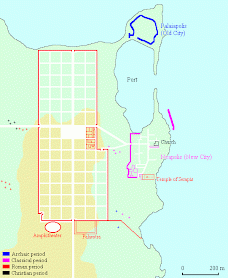
Emporiae consists of several settlements:
- The Palaiopolis or Old Town was founded by Greek settlers from Marseilles on an island opposite the Costa Brava near the Pyrenees, at the mouth of the river Fluvià. It is now called Sant Martí d'Empúries, and still occupied, which makes excavation difficult.
- The Neapolis or "new town" was later founded on the mainland; it covers about 4 ha. The jetty and the upper strata, from the second and first centuries BCE, have been excavated; the lower strata are less well known. This city was based on a Hippodamian plan.
- The Roman city, founded after 195 BCE, on the place of a native settlement that was known as Indikê. It measured about 22½ ha, included an amphitheater, and only a small part has been excavated.
- The cemeteries outside the walls.
Origins
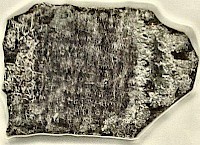
According to the Greek geographer Strabo of Amasia, the Palaiapolis of Emporion was founded by Greeks from Massilia.note It was not a completely new town: the Iberian tribe of the Indigetes was already living there. The two nations appear to have gone along well: the natives obtained precious goods from the east, while the Greeks gained a stopover port in their expanding network in the western part of the Mediterranean. This was similar to that of the Phoenicians, who had already visited the place, but had decided not to settle there. The oldest archaeological finds imported from Greece suggest that the first trade contacts took place in c.600 BCE. The town itself must have been founded a bit later, perhaps in the second quarter of the sixth century.
The town was known for a temple that was dedicated to the famous goddess Artemis of Ephesus; it has not yet been identified, but may be underneath the present church, which is built on the foundations of a large ancient building.
Greek Town
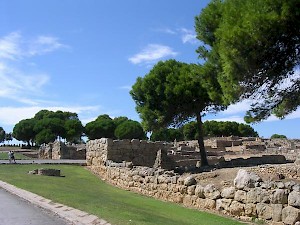
Perhaps less than a generation after their arrival at the island, the Greek inhabitants founded the new town (Neapolis) on the mainland, closer to another native town called Indikê (derived from "Indigetes"). It is possible that the capture of Phocaea, the mother city of Massilia, by the Persians (after 547) led to a migration of refugees to the west. This type of "stepping stone" settlement, in which the settlers first occupied an island, and later moved to the mainland, is well-known from Italy and the Cyrenaica. The original settlement continued to be in use - it still is.

One of the sanctuaries of the new town has been excavated, but we are poorly informed about it, as it was replaced in the fourth century by another temple. The first sanctuary seems to have stood outside the original walls, which made it accessible to the Indigetes as well. The shrine may well have been used by both ethnic groups.
The second temple was built on a high terrace and dedicated to Asclepius, the god of healing. By now, the town had expanded, so that it was within the walls. As it happens, the cult statue, larger than life size, survives: it was placed into a cistern, maybe by Christians, maybe by worshipers who wanted to protect it. Being made of white Pentelic and Parian marbles, which had to be imported from the Greek motherland, it was exceptionally precious.
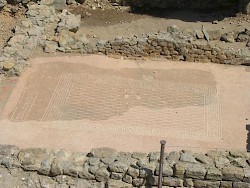
Over the centuries, the Neapolis - the expression was coined by archaeologists - expanded to the south; the wall that can now be seen dates to the second century, but traces walls from the fifth and fourth centuries have been found to the north of it. Apparently, these walls were necessary: the good relations between the Greeks and the Indigetes must at times have been strained.note
By now, the three settlements - Palaiapolis, Neapolis, Indikê - were really important. One of the main trading partners was Carthage, and it is perhaps not a coincidence that the town's coinage resembles the coins from this city: on one side, we can see a Persephone with an ear of corn, on the other a winged horse. This closely resembles the coinage of Carthage.
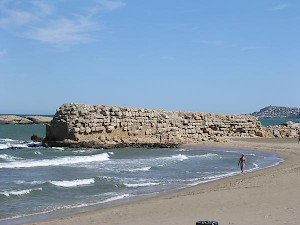
After the First Punic War (264-241), the Carthaginians conquered large parts of Spain, and the Emporiotes replaced Persephone with Arethusa of Syracuse, which may betray an anti-Carthaginian policy. The reconstruction of the walls suggests the same, and this is corroborated by the fact that in the famous Ebro Treaty (226), the Romans and Carthaginians agreed that Emporion did not belong within the latter's zone of influence.
Roman Town
During the Second Punic War, the Romans conquered first Catalonia. Emporion, captured in 218, was one their military bases: from here, the Romans could cut off Hannibal's lines of communication. Later, Tarraco and Carthage Nova were added to the Roman possessions, followed by the conquest of Andalusia.
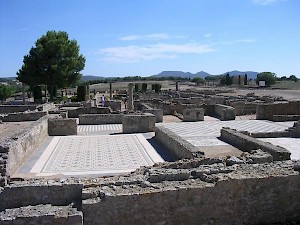
When the local tribes revolted at the beginning of the second century, the Romans sent Marcus Porcius Cato to restore order, and after 195, a large military settlement was built over the site of Indikê. This became the center of the Roman part of what was now known as Emporiae - the plural being necessary because there were now two cities next to each other. The tombs of the soldiers, found at the Les Corts necropolis, are full of Italian goods.
If, say, a legion was stationed at Indikê, there were about 4,000 men living there, who all received pay, which they had to spend somewhere. This created a substantial demand and created business opportunities for the Neapolitans. The port was expanded and a jetty was added to the east. The profits were invested in new walls, a new building phase of the Asclepium, a temple of Isis and Serapis, a large public cistern, a salting factory, and the market square with its stoa were built in the second century. The luxurious Peristyle House and several similar mansions between the Greek civil and the Roman military settlement may have been the residences of wealthy merchants and former officers who had decided to stay.
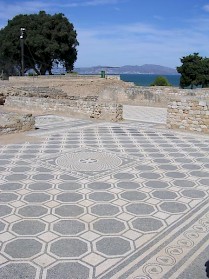
The military base was dismantled at the turn of the second and first century, and a new, civil town was built. It had the shape of a long rectangle, not unlike Cáceres, a Spanish city in the Extremadura that was also founded to replace an earlier military settlement. The new town measured about 22½ ha, which is not very large. This may have been part of the larger project, initiated in 118, to develop the area between the mouths of the Ebro and Rhône, which is known as Via Domitia.
In 45 BCE, Julius Caesar refounded Emporiae. New settlers arrived and the twin town received one single wall. The forum in the Roman part of the city was reorganized and new temples were added to the main sanctuary, which became a shrine for the imperial cult. Only a part of the refounded town has been excavated, but several monuments can be recognized: except for the forum, the main road (cardo), the amphitheater, a palaestra, a bathhouse, the city's wall, and several mansions with splendid mosaics.
 Emporiae, Neapolis |
 Emporiae, Neapolis |
 Emporiae, Neapolis |
 Emporiae, Neapolis |
The amphitheater and palaestra can be dated after c.50 CE. They are not very large: although the arena measures 75x44 meters, there were no more than 3300 seats, which suggests that the initial plan was at some point replaced by a more modest design. This fits the picture that after, say, 70, there was a crisis from which Emporiae suffered heavily.
Decline
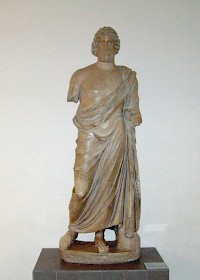
At the beginning of the second century, during the reign of Trajan, parts of the Neapolis had already been abandoned. The decline continued and the invasion of the Franks in 265 appears to have been the final blow for Emporiae. Yet, there is evidence that there were still people living there, and we known that in the fourth century, a small Christian sanctuary was built near the agora of the Neapolis. Perhaps, the statue of Asclepius that was found in the cistern was removed in these days.
However, the only site that appears to have remained permanently occupied, was Sant Martí d'Empúries: the Palaiapolis where it had all started. The port was still in use. It remained a bishops' see that was of some importance in the Visigothic age, and remained important after the Arab conquest (715).
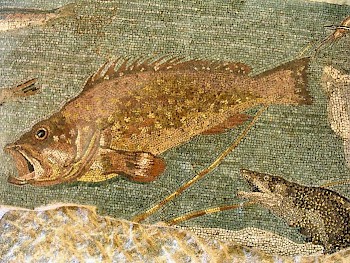
Excavations were begun in 1908; to date about 25% of the site has been excavated.
Literature
- Xavier Aquilué e.a., Empúries (2000)